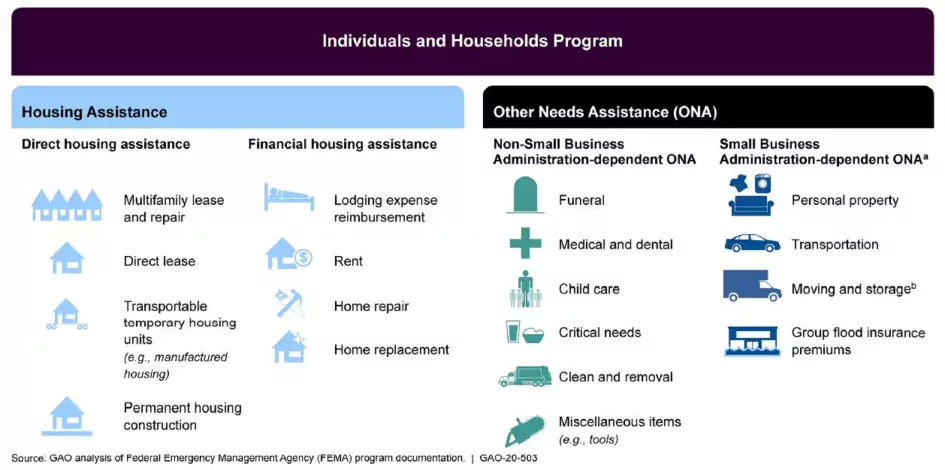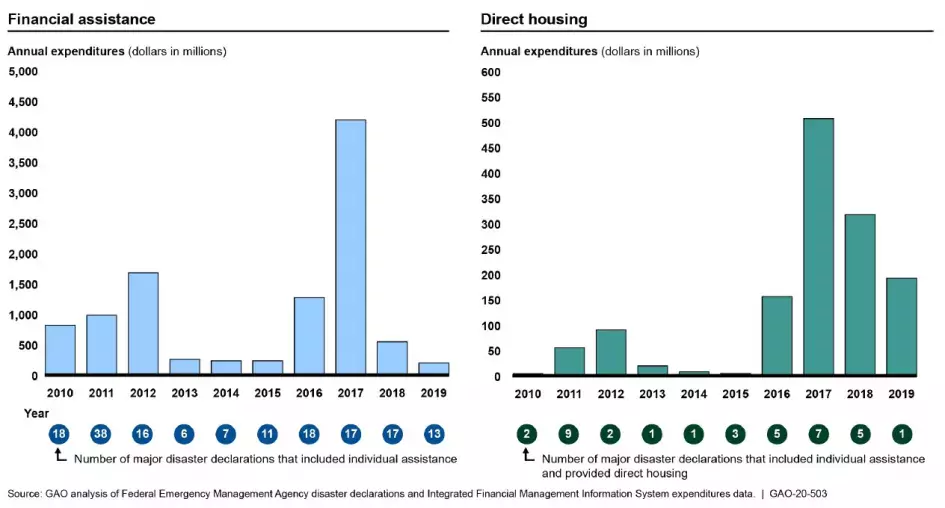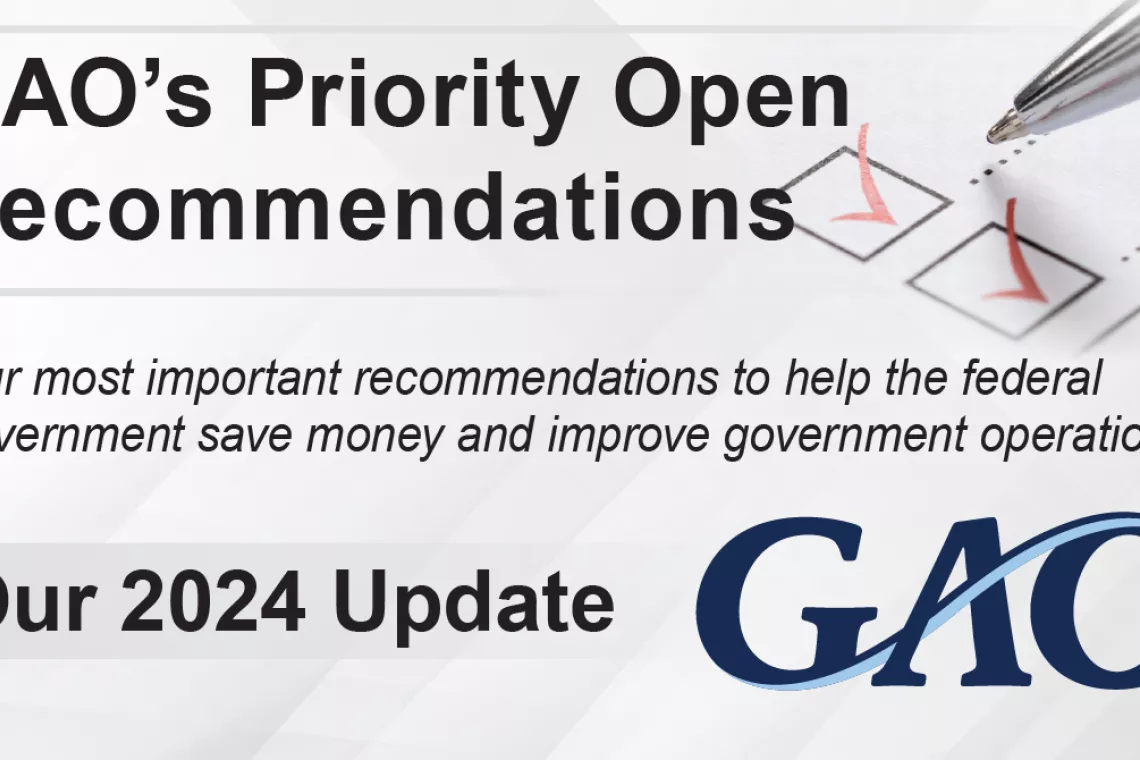How does FEMA help people recover from major disasters?
Heavy hurricane seasons in 2017 and 2018, along with devastating wildfires in California in those 2 years, affected more than 47 million people in the United States—about 15 percent of the national population. In response to disaster events like these, the Federal Emergency Management Agency can provide financial assistance for home repairs, child care, and transportation, as well as temporary housing for survivors during recovery periods. However, the program can be confusing to survivors, and would benefit from clearer communication.
Today’s WatchBlog looks at our new report on FEMA’s program that provides assistance to individuals and households after a major disaster. You can also tune into our new podcast with GAO’s Chris Currie, an expert on disaster assistance programs, to learn more:
FEMA’s Individuals and Households Program
FEMA’s Individuals and Households Program (IHP) includes 18 types of assistance, such as financial assistance for home repairs, child care, and transportation. It is intended to be distributed quickly to promote recovery. The graphic below illustrates the types of assistance available under this program.
Figure: Types of assistance available under the Individuals and Household Program
Image

FEMA’s use of the Individuals and Households Program
Since 2010, FEMA has awarded more than $11.5 billion in IHP assistance to eligible survivors from 161 disasters. The below graphic shows disaster assistance dollars per year, with a significant increase in 2017 after the heavy hurricane season.
Image

Challenges in accessing assistance
However, survivors have faced challenges in accessing this assistance, which is increasingly important as more larger-scale disasters affect the U.S. In our new report, we identified the following challenges facing survivors trying to access IHP assistance:
- The process can be confusing for some survivors, causing them to miss out on some IHP assistance. FEMA cannot award aid for some losses, such as for personal property (i.e., damaged clothes, appliances, and furniture) without survivors first applying for a disaster loan from the Small Business Administration. Our analysis of applicant data found that 1.7 million survivors did not complete this step for disasters in 2016-2018, and tens of thousands of applicants may not have received all of the aid from FEMA for which they would otherwise be eligible.
- Survivors do not understand FEMA’s letters that communicate award decisions–sometimes causing survivors to stop pursuing assistance rather than submitting an appeal. One survivor we met with in North Carolina even told us she threw her letter in the trash thinking that FEMA denied her assistance. However, the FEMA official on the ground explained that she simply needed to provide more documentation.
- Disaster survivors need more information to understand FEMA’s award decisions. This would help manage survivors’ expectations, build trust, and improve program transparency, which are important when providing public services to those who have experienced a traumatic event, including natural disasters.
Disaster survivor characteristics and outcomes
Along with this report, we have also reviewed FEMA’s applicant records, which provide a unique look at the characteristics of those affected by major disasters and their outcomes. For example, applicants are more likely to be uninsured and live in communities with a high proportion of vulnerable groups—such as the elderly, disabled, and non-English speakers. Find out how survivors fared each year from 2016 to 2018, or review snapshots of outcomes for selected major disasters.
FEMA’s work with state, local and tribal entities
We have also previously reported on FEMA’s readiness to respond to disasters when state, local, and tribal entities need federal assistance. As we previously reported, state and local governments have limited preparedness to help their communities recover from disasters. Our new report also found that state, local, and territory officials had a limited understanding of the IHP program, making them poorly prepared to support effective recovery operations.
- Comments on GAO’s WatchBlog? Contact blog@gao.gov.





